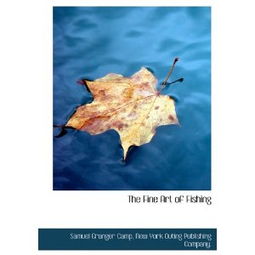Content:
Fishing in a small creek can be a delightful and rewarding experience, offering a chance to reconnect with nature and enjoy the tranquility of the water's edge. Whether you're a seasoned angler or a beginner looking to try your hand at fishing, mastering the art of catching fish in a small creek requires a blend of patience, knowledge, and the right techniques. Here's a comprehensive guide to help you improve your chances of success when fishing in a small creek.
Understanding Small Creek Fishery
Small creeks are often overlooked by anglers in favor of larger bodies of water, but they are teeming with fish that can be quite fun to catch. These creeks are typically home to species like trout, panfish, and even bass, depending on the region. The key to success lies in understanding the unique characteristics of small creeks and adapting your tactics accordingly.
Choosing the Right Equipment
Rod and Reel: For small creeks, a lightweight spinning rod with a fast action is ideal. The rod should be between 6 to 7 feet long, which provides enough reach to cast effectively while being manageable in tight spaces.
Line: Use a monofilament line with a test strength of 4 to 6 pounds. This line is flexible enough to handle the light bites typical of small creeks without being too heavy to spook the fish.

Lures and Baits: For small creeks, natural baits like worms, grubs, and small pieces of fish can be very effective. Artificial lures like spinners, tiny jigs, and soft plastics can also be productive. The key is to use lures that mimic the natural prey of the fish in the creek.
Choosing the Right Spot
Current: Fish tend to congregate in areas with slow or still water, such as behind rocks, logs, or along the edges of the creek. These spots provide protection and allow fish to conserve energy.
Structure: Look for areas with submerged rocks, logs, or weed beds. These structures can provide habitat for insects and small fish, which in turn attract larger predators.
Depth: In a small creek, fish often hold in shallow water, so cast close to the shore or along the edges. However, don't rule out deeper holes, as they can be prime spots for larger fish.
Fishing Techniques
Presenting Your Bait: When fishing in a small creek, it's important to present your bait or lure in a way that mimics the natural movement of the prey. For natural baits, let them drift naturally or gently twitch them to make them look more lifelike.
Trolling: Trolling can be effective in small creeks, especially when you're covering a lot of water. Attach your lure to a light line and let it drift with the current, retrieving it at a slow pace.
Cast and Retrieve: This is a classic technique where you cast your lure into the water and retrieve it back to the boat or shore. Vary the retrieve speed and depth to see what the fish prefer.
Still Fishing: Sometimes, the best approach is to simply cast your lure or bait and let it sit still. This can be particularly effective in areas with a lot of structure.
Reading the Water
Water Clarity: Observe the clarity of the water. Clear water may require more precise casting and finesse, while murky water can allow for longer casts and more aggressive retrieves.
Fish Activity: Look for signs of fish activity, such as splashes, bubbles, or rising fish. These can indicate the presence of fish and help you determine the best spots to fish.
Current: Pay attention to the current's direction and speed. Fish may hold in areas where the current is slower, and understanding the current's flow can help you predict where the fish might be.
Patience and Persistence
Fishing in a small creek requires patience. Fish may not bite immediately, and you may need to experiment with different techniques and baits. Stay focused and be prepared to wait for the right moment.
Safety and Etiquette
Always prioritize safety when fishing in a small creek. Wear appropriate footwear to prevent slipping, and be aware of your surroundings to avoid hazards. Additionally, practice good fishing etiquette by respecting the natural environment and other anglers.
In conclusion, fishing in a small creek can be a fulfilling and enjoyable activity. By understanding the unique characteristics of these water bodies, choosing the right equipment, and employing effective techniques, you can increase your chances of success. Remember to approach each fishing trip with patience and a willingness to learn, and you'll soon become a proficient angler in the small creeks of your choice. Happy fishing!












